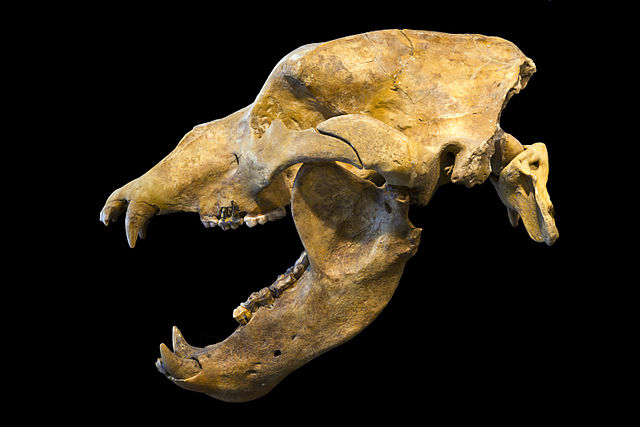The Divje Babe flute, also called tidldibab, is a cave bear femur pierced by spaced holes that was unearthed in 1995 during systematic archaeological excavations led by the Institute of Archaeology of the Research Centre of the Slovenian Academy of Sciences and Arts, at the Divje Babe I near Cerkno in northwestern Slovenia. It has been suggested that it was made by Neanderthals as a form of musical instrument, and became known as the Neanderthal flute. The artifact is on prominent public display in the National Museum of Slovenia in Ljubljana as a Neanderthal flute. As such, it would be the world's oldest known musical instrument.
The artifact as displayed in the museum
Excavation in Divje Babe I Cave
Potočka zijalka, a cave in the Eastern Karawanks, where the remains of a human residence, dated to the Aurignacian (40,000 to 30,000 BP), including a bone flute, were found by Srečko Brodar in the 1920s and 1930s. This marks the beginning of Paleolithic research in Slovenia.
Divje Babe flute - holes
The cave bear is a prehistoric species of bear that lived in Europe and Asia during the Pleistocene and became extinct about 24,000 years ago during the Last Glacial Maximum.
Cave bear
Rearing Ursus spelaeus skeleton AMNH
Life restoration.
Skull of Ursus spelaeus: Cave bears lacked the usual two or three premolars present in other bear species.








